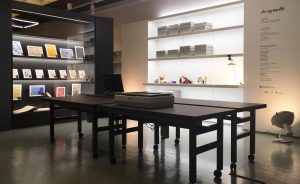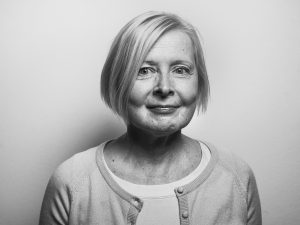A new activity-based exhibition in Design Museum’s Design Attic gives visitors a look behind the scenes at the museum with the opportunity to take part in studying and accessioning authentic objects for the collections. Design Attic also gives audiences an opportunity to be inspired by the museum’s new acquisitions. On this occasion, material from textile artist and designer Margareta Ahlstedt-Willandt is being processed for the collections.
Anja Makkonen, daughter of artist and designer Margareta Ahlstedt-Willandt (1888–1967) has donated a body of material relating to her mother’s work that contains fabric samples, sketches for textile designs and archive materials. Design Museum invites the public to take a look at the artist’s materials, with the opportunity to try their hand at collections-related work by accessioning these important items into the museum’s digital archives.
Who was textile artist and designer Margareta Ahlstedt-Willandt?
Margareta Ahlstedt-Willandt studied at the department of model design of the Central School of Industrial Art from 1908 to 1913. The school did not yet have separate instruction in textile art and she acquired her practical skills in this area at the weaving courses of the Wetterhoff school in Hämeenlinna.
Like many women artists in her field, Margareta specialised in the design of hand-woven textiles and went on to establish her own firm in Helsinki. Founded in 1924, her ‘Agency and Weavery for the Decorative Arts’ sold handicraft patterns, made woven textiles, hand-printed and painted textiles to order, and counselled clients in matters of colour schemes and home interiors.
Interior decorators were interested in artistic textiles made by hand. In the late 1920s, Margareta and her colleagues Greta Skogster and Elsa Kallio established a shop at the corner of Yrjönkatu and Ratakatu streets in the centre of Helsinki. The firm was later incorporated with the applied art department of the Stockmann department store, notes Chief Curator Merja Vilhunen of Design Museum.
Margareta’s own weaving firm went on to specialise in utility textiles. It operated at first in Yrjönkatu street and later in the Kruununhaka district of central Helsinki, employing at best some ten people. Popular products of the firm in the 1950s were curtains woven from fishing thread, small tapestries and tapestry cushions. The tapestries with their floral motifs could be made economically with surplus yarn from the weavery.
Margareta ran her own weaving firm until 1957. She wove tapestries herself throughout her career and was still an active textile artist in her seventies. Ahlstedt-Willandt also designed a number of church textiles and shag rugs for the Aaltonen rug-weaving company in Kiikka in the Satakunta region of West Finland.
Margareta Ahlstedt-Willandt was awarded prizes in many international exhibitions of applied art and design. In 1930, she had a solo exhibition at the Museum of Applied Art Arts (present-day Design Museum) in Helsinki. Her memorial exhibition was held at the museum in 1988.
Design Attic and the material related to Margareta Ahlstedt-Willandt will be open and available to the public from 1 p.m. to 7 p.m. on Tuesdays from 15 October until 17 December 2019. Access by lift on the hour from the lobby of the museum. At other times, the space is available to researchers by special request (please contact Design Museum’s accessions department). Enquiries for guided visits subject to fees for groups from schools: info@designmuseum.fi
Exhibition working group: Hannaliisa Hakala, Hanna Kapanen, Marjo Kenttälä, Johanna Kiuru, Silja Koskimies, Leena Svinhufvud, Susanna Thiel and Merja Vilhunen.
Exhibition architecture: Wilhelmiina Kosonen.
Graphic design: Sanni Kariniemi.


